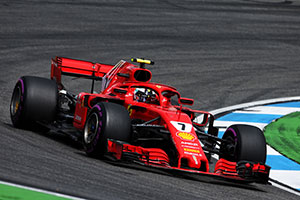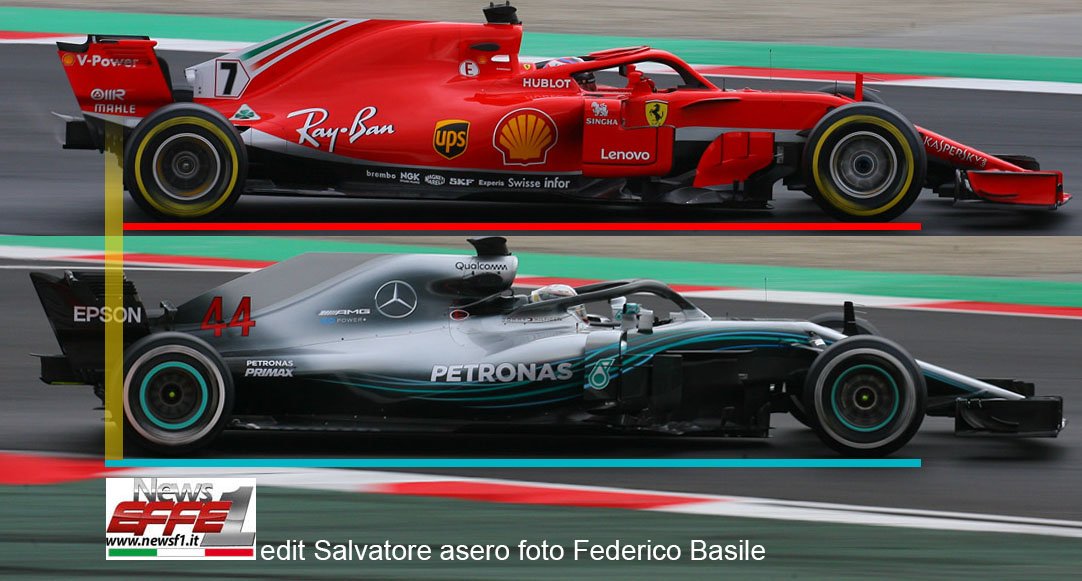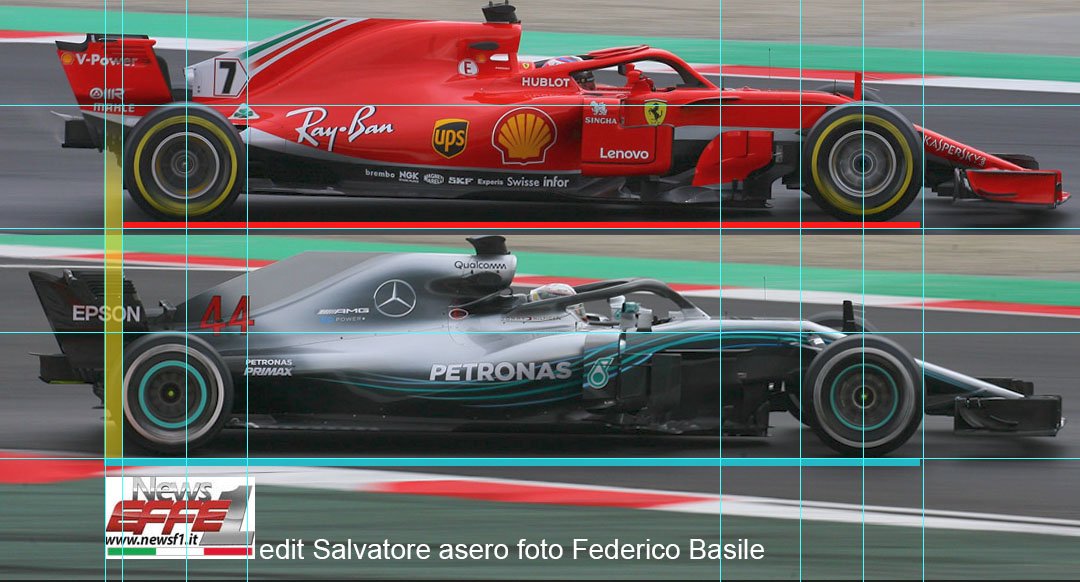Just_a_fan wrote: ↑25 Feb 2018, 00:32
The camber of the wing is from the leading edge of the first element to the trailing edge of the last element.
Of course the slot "energizes" the flow, that's what they do - they allow high pressure air to move to the low pressure side and they do so in order to prevent separation on the low pressure side. That's what slots are for. That's why the wings have slot gaps between the elements.This slot is no different to the slots between wing elements - they all reduce separation and thus stalling of the wing by bleeding air through to the low pressure side.
The increased camber helps the Y250 vortex by ensuring a large pressure drop across the transition step between the regulated central section and the unregulated outer sections. The air moving below the regulated section is drawn outwards toward the rising section here. This causes the vortex to form. This area is a vortex tunnel but it can only work if the flow is kept happy. Without the slot, the flow will separate under the main plane, the wing will stall and the vortex won't be formed. The camber drives the Y250, the slot keeps the flow happy below the main plane. The slot isn't there to make the Y250 stronger, it's there to facilitate it by making the increased camber work. There's a difference.

I promised I'd reply, I apologize for taking such a long time. I wanted to make some purposeful and as accurate drawings as possible.
First of all, I don't think we are disagreeing too much, just over a simple thing - would there be a separation on the main plane (my guess is you are referring to the wing main plane outboard of centre section) with this new front wing of Ferrari. Your argument is that the first slot is there to prevent it (and of course energize the Y250, like good little slots do) because of increased camber - that would otherwise cause separation. My argument is that there would be no separation to begin with, even without the slot, and that it's there just to energize the vortex.
My arguments are based on 2017 Ferrari design and FW evolution.

What you can see on picture above are my modest attempts to visualize the cross section of front wings during the season 2017. Cross section in question would be some 40-50mm outboard of central section edge (around Y290-Y300) where there is an extreme local cross section - cambered more than those around him. In my opinion, this cross section is the most detrimental for Y250 vortex on Ferrari in these 2 seasons.
Launch spec Ferrari had a single main plane, v2 had 2 pieces, and v3 again had 1 main piece, but with a curve near Y250 zone. For these illustrations, I assumed that Ferrari made no changes to flaps and that the height and length of trailing edge is the same for all 3 versions of the wing in this cross section. Seeing a lot of photos, I don't think this is a bad assumption. As these wings worked and worked better than those before them, we can conclude there were no problems with any of them - including separation of airflow on the under side. I will come back to my perception of ideas behind these designs later in the text.
With 2018 launch spec wing, Ferrari showed us a more cambered wing with seemingly shorter chord as well. By design, main plane is a hybrid between v1 and v2 wing in 2017. Other than shorter chord compared to 2017, I think the highest point in this area is also a few millimeters higher this year.

There aren't a lot of reference photos for this illustration, other than studio photos, photos of 2017 car and common sense. In my view, first 3 Y250 elements/airfoils are almost the same as 2017 v2 wing. Seeing how 2017 v2 worked without this slot in main plane, I believe there would be no separation this year as well. Even if the wing is more cambered later on, if the under side is roughly the same - there would be no separation in case of a single-element main plane.
Let us add a few more variables into the equation. Obviously, no one is guaranteeing us the under side is the same. In F1 everything is on the knife edge, and raising the trailing edge 2-3mm (a bit past the manufacturing tolerance) in this area could spell disaster. So, what does a vortex need to work?
To the best of my knowledge, vortex has two main characteristics - vorticity and life span (i.e. how long it lasts). Both are very important for Y250 vortex, as this affects all downstream aero. What are we talking about when we are talking about "vortex strength" - vorticity or life span? Your quote is:
Just_a_fan wrote: ↑25 Feb 2018, 00:32
The slot isn't there to make the Y250 stronger, it's there to facilitate it by making the increased camber work.
I assume you mean vorticity when you say strength? It is how I also would describe vorticity - as vortex strength. To keep spinning (i.e. extend its life span), vortex needs fuel, which is air of course. High energy air is preferable, I'd imagine. Sadly for me, this area is a bit of an unknown for me (compared to some other areas of aero), so these next few lines are my best guess, based on other knowledge and modest experience.
All thing being equal, Y250 vortex with bigger vorticity will have longer life span. Am I correct with this? I would think so, based on its inertia - it has more air in the system to begin with and should last longer because of this.
All thing being equal, Y250 vortex fed with more air will have longer life span. I am more confident on this thesis than previous, it's a bit self explanatory.
Can we say that camber is main factor of vorticity? Higher camber means bigger pressure difference and this means more vorticity, right?
Can we say that more slots is main factor of life span? More air is fed initially, obviously.
Now, we come to something I feel is worth discussing and is directly related to 2018 Ferrari. Last year, there was a lot of talk about latest spec MCL32 front wing. I believe it's the same wing on MCL33. Allegedly, it weakened the Y250 vortex. Again, what are we talking about when we say - weak vortex? Lets just use vorticity and life span from now.
JasonF1 wrote: ↑25 Feb 2018, 05:01
What Just_a_fan said regarding the slot is correct, the slots themselves doesn't make the vortex stronger, they actually weaken it. A Mclaren engineer was talking about it last season and that's what he implied.
Jason, I think I remember seeing your name during this discussion on MCL32 front wing. Here's my view on all this.
At the time, I read something along the lines of - because of slots, you feed the air from top side to under side of the wing, thus reducing pressure difference. I don't think this is true. Slots are supposed to be convergent pieces, meaning outlet surface is smaller than inlet surface. In case of our 2D air flow analysis, this is height of the slot inlet and outlet. Of course, there could be a diverging slot or constant-height slot, but to my knowledge - this would be... strange, to say the least.
Anyway, because of its converging nature, slot increases pressure in front of it and decreases pressure past it. Again, this would be opposite for diverging slot (as is the case for radiator intakes in side pods, diffusers and similar stuff). This is because of an increase in air velocity once it leaves the slot, and this is what is energizing airflow. So, instead of decreasing pressure difference, converging slot (and I honestly believe, based on thousands of front wing photos I've seen, that all slots are converging) is actually increasing it, thus producing a vortex of higher vorticity (if my previous assumptions are correct)
So, how is adding more slots "weakening" the Y250 vortex? Could it be that vortex is weaker (smaller vorticity than before) because of smaller camber on the wing? Here are my illustrations of MCL32 front wing Y290-300 cross sections, for launch and final spec wings.

(If you thought I used SF70-H v1 drawing for v1 MCL32 drawing, you are right, it's just to illustrate things, nothing else). Nobody needs me telling them this is a huge difference. Needless to say, my illustrations are based on photos and are as close as possible to real thing as far as I could tell. For MCL32 final spec wing, I couldn't find under side or back side photo and this was hindering me quite a bit.
Let's compare all of these:

Ferrari v2 design has about the same chord as v1, but feeds the vortex with more air via an extra slot and is a bit more cambered. Y250 should have longer life span and more vorticity.
Ferrari v3 design has about the same chord as v1, but feeds the vortex with more air via an up-curve in main plane (I think this surface also allows Y250 to form earlier) and is more cambered. Y250 should have longer life span and more vorticity. How much more compared to v2 design, I can't tell.
Ferrari 2018 design has shorter chord compared to 2017 v1, feeds the vortex with more air via two extra slots and is quite a lot more cambered. Y250 should have a lot longer life span and a lot more vorticity. (A lot is a relative term in this analysis only). It should be noted that this design probably causes a lot more drag as well (as I mentioned in my overall SF71-H analysis).
MCL32 v3 design has about the same chord as v1, but feeds the vortex with more air via three extra slots and is less cambered. Y250 should have a lot longer life span, but I can't say much about vorticity between the two - I believe the difference is really small, either more or less vorticity. One thing is worth mentioning though - with Honda having an engine down on power compared to other manufacturers, and McLaren opting for high efficiency design over outright downforce, I think it's safe to assume that this front wing is aimed at lowering the drag. On its own and by extending Y250 life span, thus making it more efficient with front tyre wake, thus reducing drag.
Let me say again - I'm not quite sure about this whole thing about Y250 vortex. These are my assumptions based on knowledge of aero and modest experience. I haven't performed CFD simulations on my PC regarding this subject and I'm not sure I'll be able to in near future. Still, when I do them, I'll come back here with results, what ever they turn out to be. If anyone knows for a fact that a single idea stated here is wrong, please let me know.

Also, if there was a big discussion on subject of Y250 subject on this forum before, please leave a link to it in this thread.
Thanks for staying with me this whole time, kudos on that!

Cheers guys!









